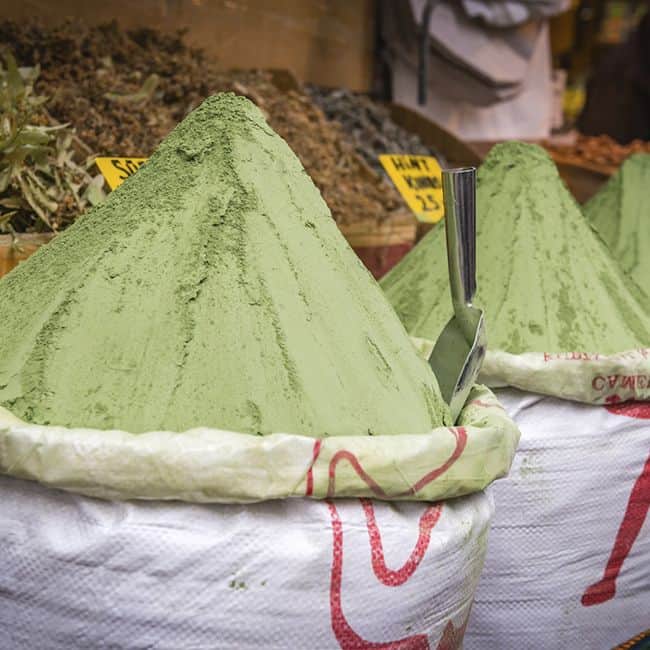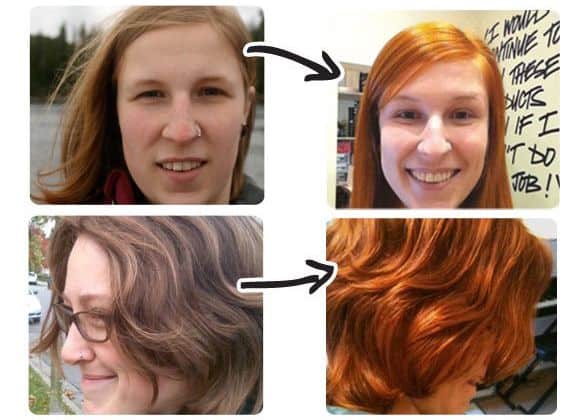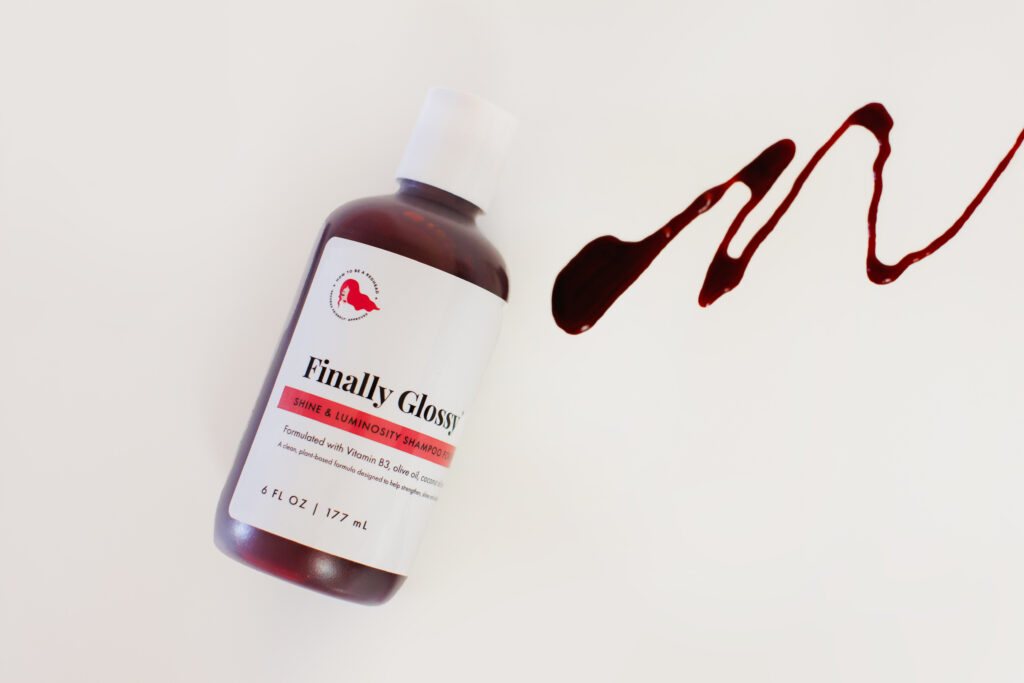Natural red hair fades to a lighter red or to a not-so-red brown as one ages or spends time in the sun. Caring for red hair is of the utmost importance which means no heavy chemicals because of the dreaded purple/pink undertone that can occur with dyes. So, what should a natural redhead do who wants to enhance their red hair? Turn to henna!
Henna conditions and reddens the hair. It bonds to the hair, making it thicker, glossier and healthy. There is no stripping, no bleaching and no developer involved. Henna is a plant and works with the hair to boost and create a unique, natural red. It is centuries old, tried and true, and has helped many natural redheads and non-redhead alike boost and create their own beautiful color.
While chosen/’by choice’ redheads can use henna to create a unique new shade for themselves, natural redheads can use it to boost and enliven their natural color.
READ: The 6 Best Ways To Keep Red Hair From Fading
There is some confusion when it comes to henna, and from my personal experience, the confusion comes from it seeming too good to be true. Henna is a natural plant, and if done right it is very conditioning and healthy for the hair. So, let’s clear some things up. It’s time to answer some of the most frequently asked questions I have come across in my henna journey – all advice is redhead approved!
Note: I am a natural redhead who has tested and approved henna. If you’re a redhead by-choice, these tips can pertain to your use of henna but may differ based on your needs. Always consult a professional who has experience with henna.
1. Q: Will henna lighten your hair?
A: Unfortunately, this is one thing that henna can not do. Henna bonds to the hair strand, coating it in a protective protein layer and combines its color with your natural color to create your own unique red.
2. Q: What is the difference between Cassia Obovata and henna?
A:

Cassia Obovata powder looks very much like henna powder, but generally does not stain hair or hands. It is an excellent conditioner which makes hair glossy and thick, with a healthy scalp. This is commonly known as neutral henna, but it isn’t henna at all. The leaves contain yellow resin pigment and it is well known for its conditioning and restorative properties.
Henna is a blooming plant with leaves containing red resin pigment. The color is released when the leaves are crushed and liquid is added to it. Many have used it for temporary body art and permanent hair color.
Both condition the hair, well but Cassia does a slightly better job.
I wouldn’t recommend ever using Cassia Obovata alone as it has a yellowish tone and not the natural red of henna. However, used WITH henna it can be a great aid to lighten the red deposit on your air and up the conditioning factors. I recommend Light Mountain Henna in Light Red for a great balance of henna and Cassia Obovata.
3. Q: Will henna cover grey/white hair?
A: I have seen many conflicting remarks on this, and I think it comes down to how you apply it and the brand you use. If you use LUSH’s Caca Rouge and if left on long enough, I can guarantee you won’t see any white or gray hair, just a shimmery red.
Note: Henna with Cassia in it may be a little harder to cover, but not at all impossible. For gray/white coverage, I would 100% recommend henna, it is by far your best option, especially as a redhead.
4. Q: Is henna semi-permanent?
A: Another great question which I have often found the wrong answer to online. Henna IS completely permanent. In fact, it fades significantly less than chemical dye. It will fade, yes, especially if you are swimming a lot or out in the sun. If properly cared for your henna will be perfect until you’re ready for a touch-up!
5. Q: How long do I have to wait between henna dyes?
A: Unlike chemical dyes, henna doesn’t eat away or split open the hair follicle. There is no need to wait a specific amount of time between colorings. However, if you are trying to achieve a certain look or are concerned by how bright your results are immediately after coloring, take a step back and wait at least 72-48 hours. Henna takes at least 48 hours to fully oxidize on your hair after application.
For example, when I originally used henna to go back to red from platinum blonde, the results were neon orange for two days. But by the middle of the second day, it began to calm down and settled into a great ginger shade. I still needed to henna again to get the result I wanted, to create a “patina” on my hair, and so I did! And very shortly I had the perfect color.
READ: 4 Ways To Boost Your Red Hair and Stop Fading
6. Q: Can I use chemical dye on henna treated hair?
A: It isn’t recommended to use chemical dye on henna hair, simply because the bonding of the henna to your hair adds an extra layer for the chemicals to penetrate, and therefore makes the color result unpredictable. This is another reason why henna is very permanent; it is very hard to change your hair color once you decide henna is for you. So, if you are a natural redhead looking for enhancement, henna really is perfect because who would you want to change their red hair color?

LUSH testimonials from natural redheads using henna to enhance their red. Credit: LUSH
7. Q: Why do people complain about the mess?
A: Henna is messier than chemical dye, this is true. It is literally a mud mixture which you are applying to your hair. So be prepared for some mess. However, there are various ways to cut back on the mess, and different brands can be messier than others.
8. Q: How long does henna need to stay on your hair?
A: From my experience, no less than 4 hours. For some brands, I would even recommend sleeping in it, though keep in mind henna is messy, so there will be lots of wrapping involved and stained towels if you want to be cozy at night.
9. Q: Is henna safe to be used after a keratin treatment?
A: Yes! A lot of places on the internet will say no, however, they are thinking about chemical dyes and not henna. Personally, I used henna 4 days after my keratin treatment and it didn’t affect the color or the treatment. If anything, my hair was even smoother and more behaved than before the henna. Henna is a great tool to lock in conditioning treatments like keratin.
10. Q: What are your recommended ‘redhead friendly’ approved henna brands?
A: A question these tried and true locks are happy to answer!
- Lush Henna in Caca Rouge: Lush henna is infused with essential oils and coconut oil to leave hair extra conditioned and incredibly vibrant. If you want a foolproof way to ensure a vibrant red, this is the henna you should go for. It is pure henna, without any added plants or metals (very important to have no metallic additives) so it delivers a rich red. This henna you can leave on for 4 hours or all night. The main con to this is it is a little messier than the other I suggest as it comes in a block and is a little thicker of a paste when applied.
- Light Mountain Henna in Light Red: Don’t be put off by the pink bird on the box, this color is nothing like pink. This is a very user-friendly powdered henna. I recommend mixing it with hot water, then letting it open up either on a double boiler or for one hour or so, or covered with saran wrap at room temp overnight. This is important as this shade from Light Mountain is a mixture of mostly pure henna with Cassia, which adds a yellow/gold tone to turn a lighter red and more ginger color. It is subtler than the Lush, though still very beautiful and powerful. This is also a creamier texture, so it is very easy to apply and wash out.
If you are looking for a way to keep your red hair shiny and healthy, look no further:
Finally Glossy® Shine & Luminosity Shampoo for Redheads
It took many years to custom-make the Finally Glossy® formula and we’re so excited for redheads to enjoy it. We’re thrilled to release another clean redhead beauty product. It is paraben-free, cruelty-free, sulfate-free, petroleum-free, mineral-oil, and vegan. It also contains no perfume, is free of gluten and is silicone-free, phthalate-free, formaldehyde-free and cocamidopropyl betaine-free. This clean formula is formulated with Vitamin B3, olive oil, coconut oil and green tea.



